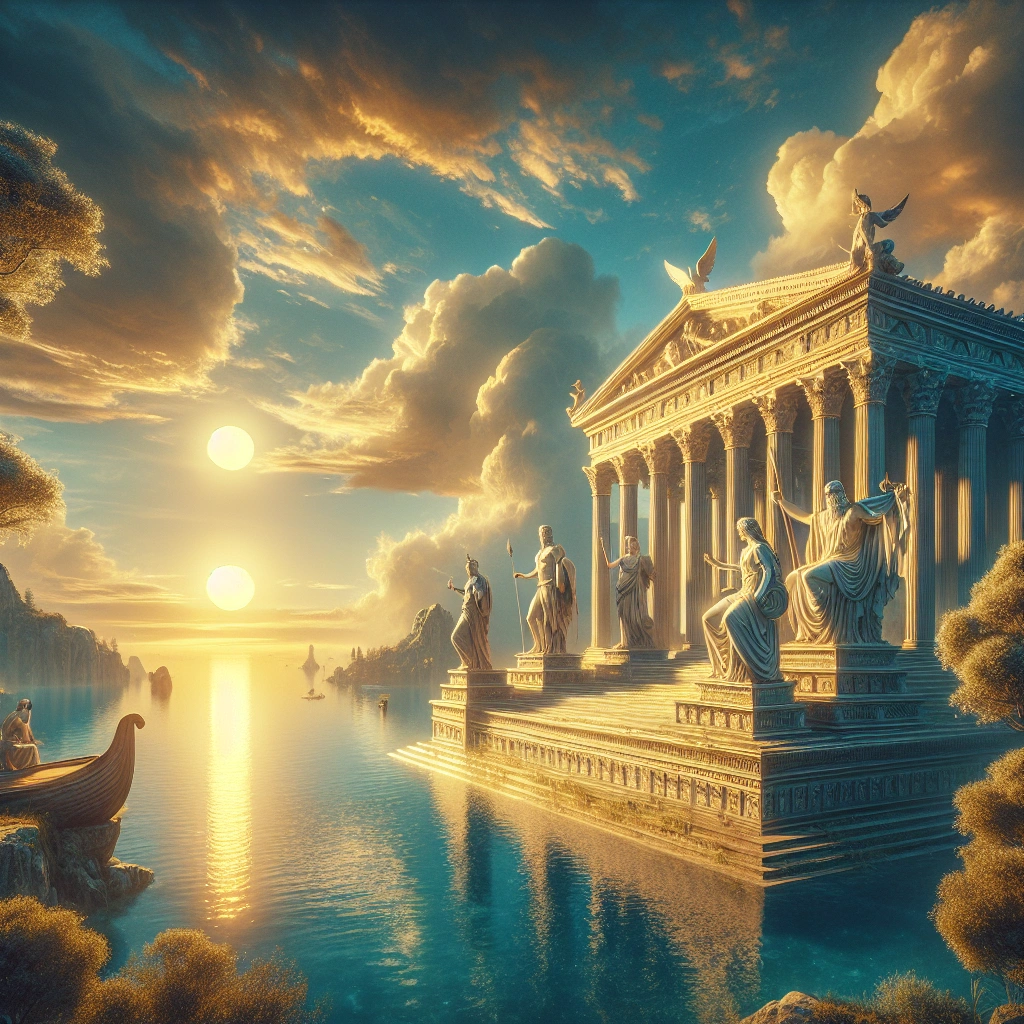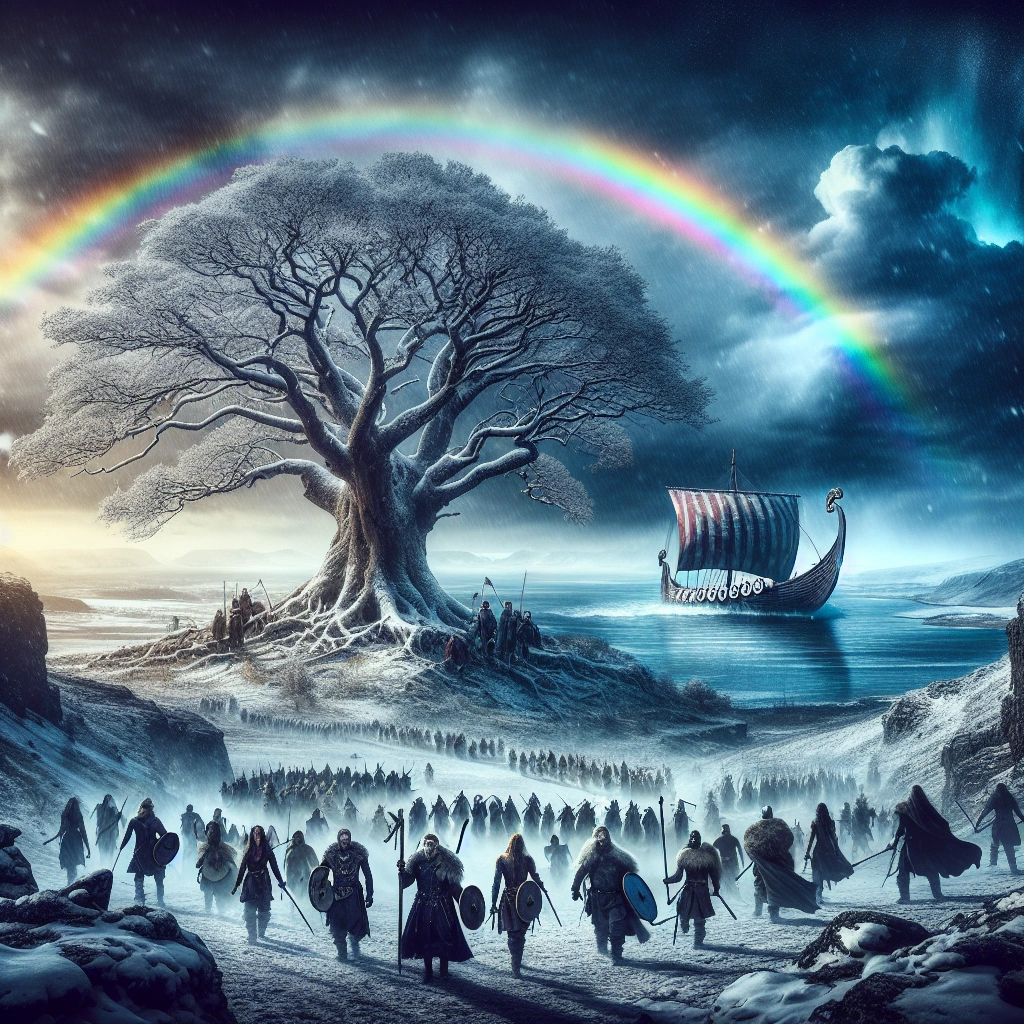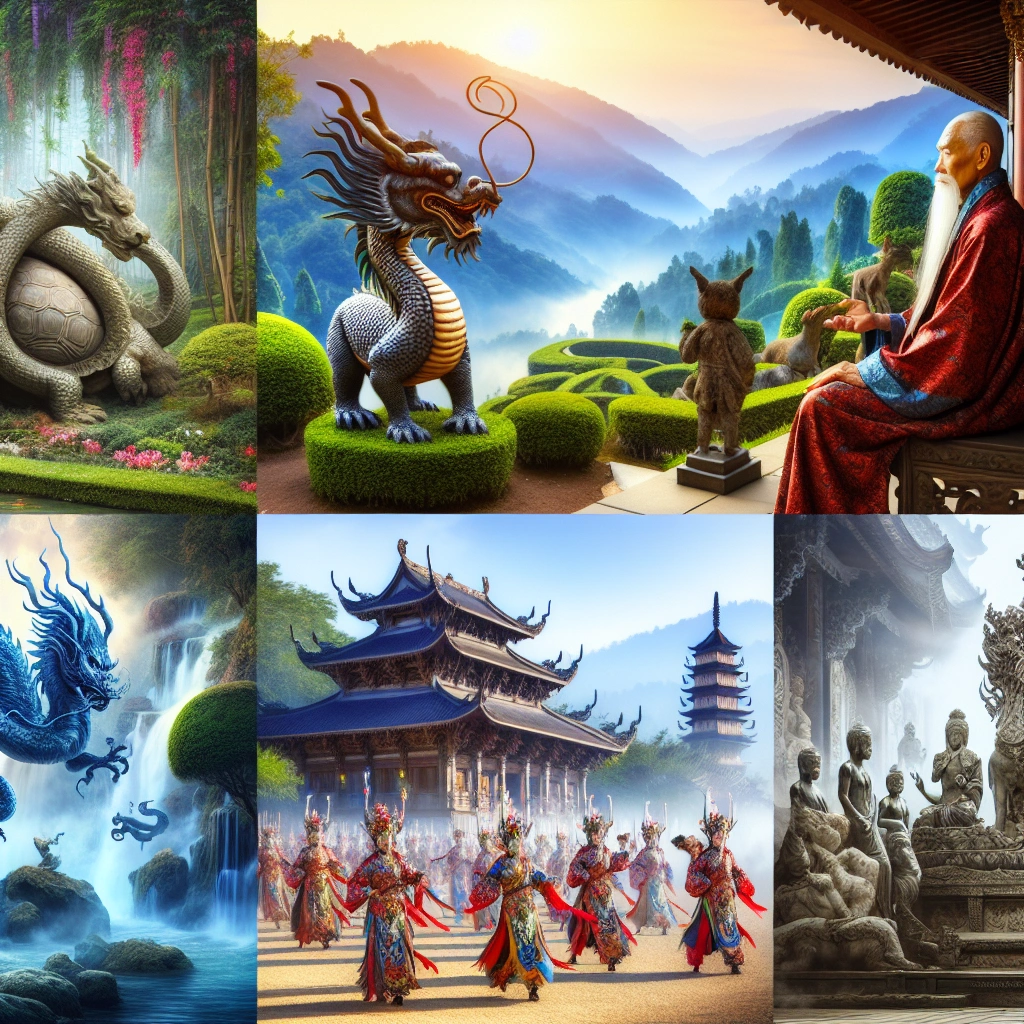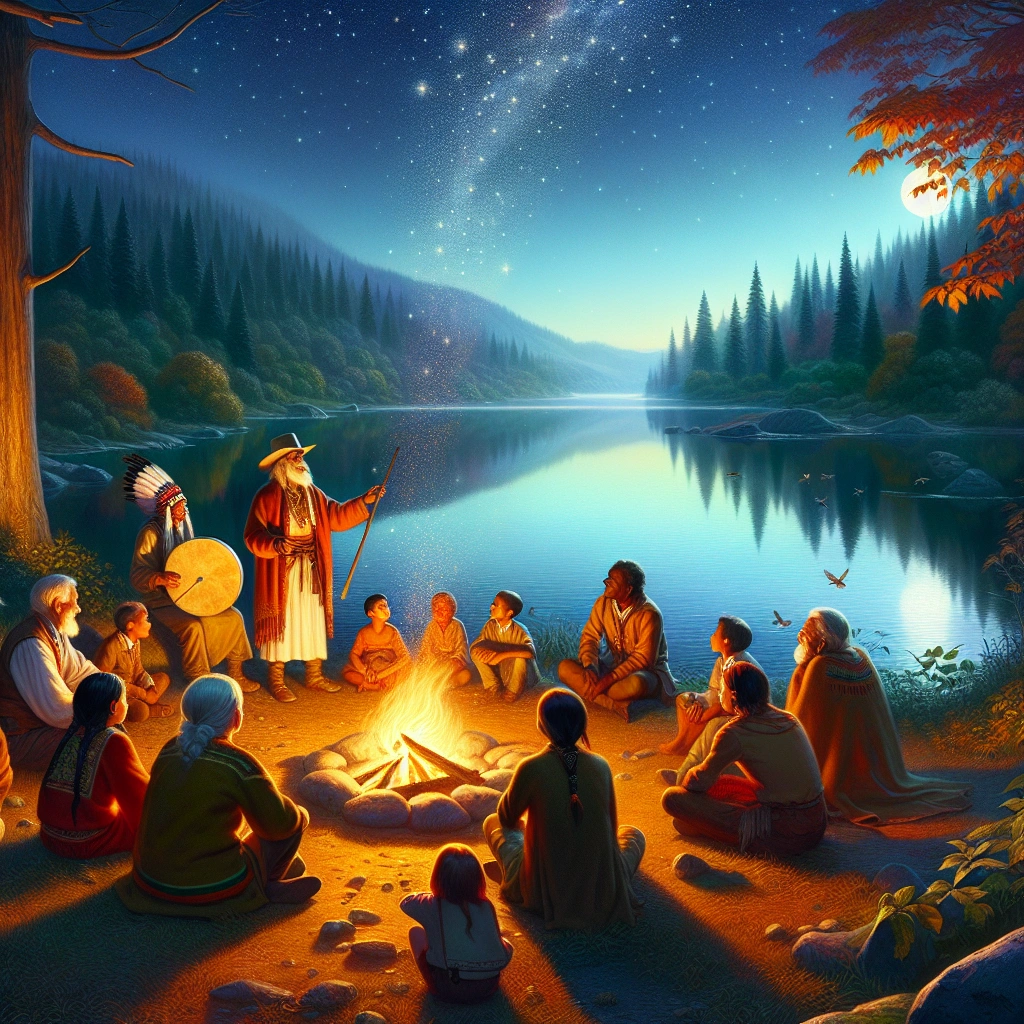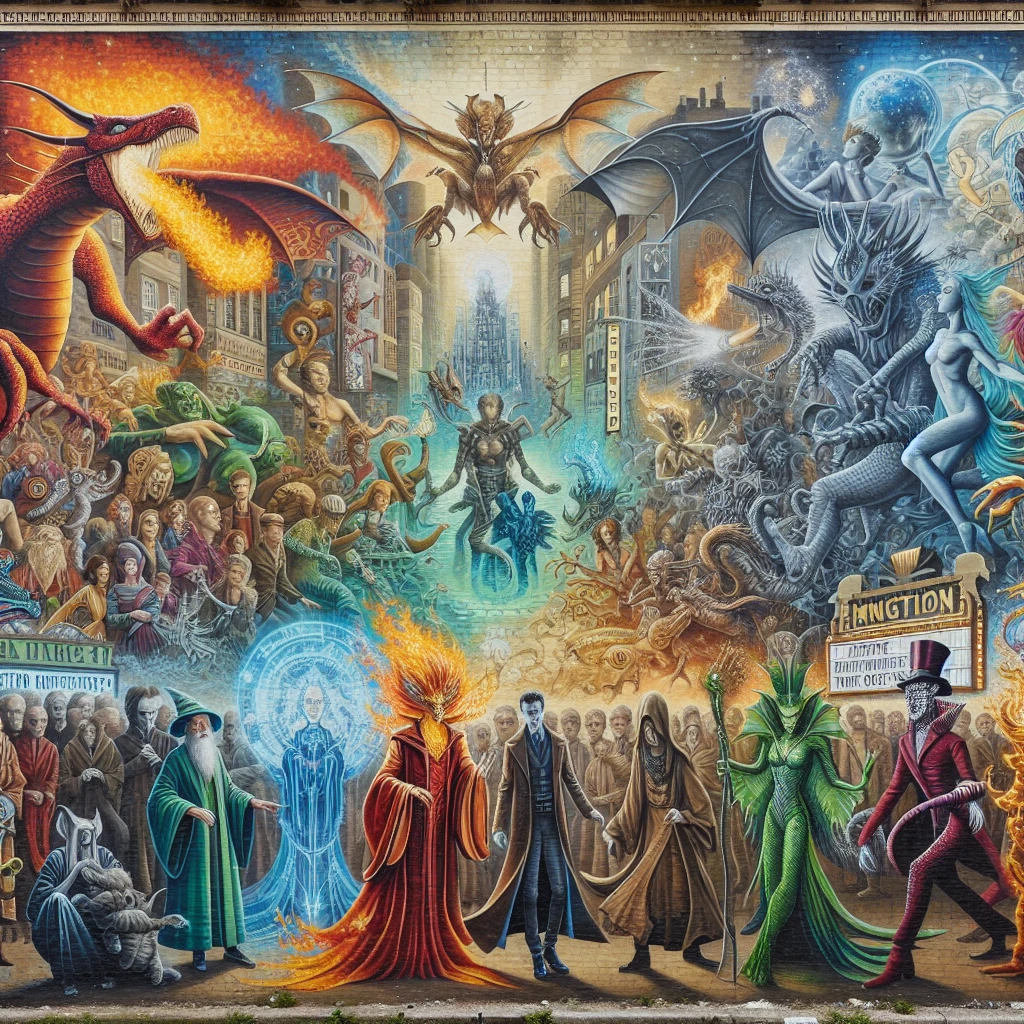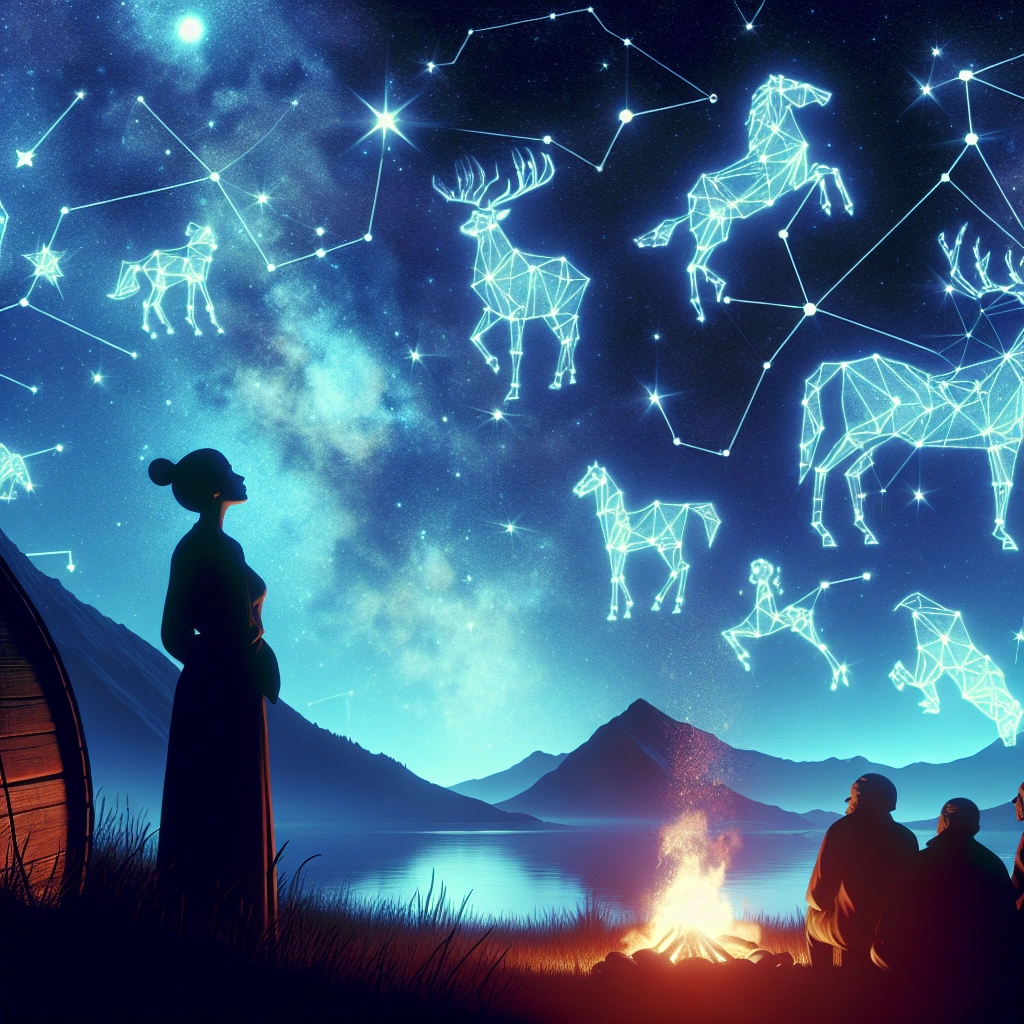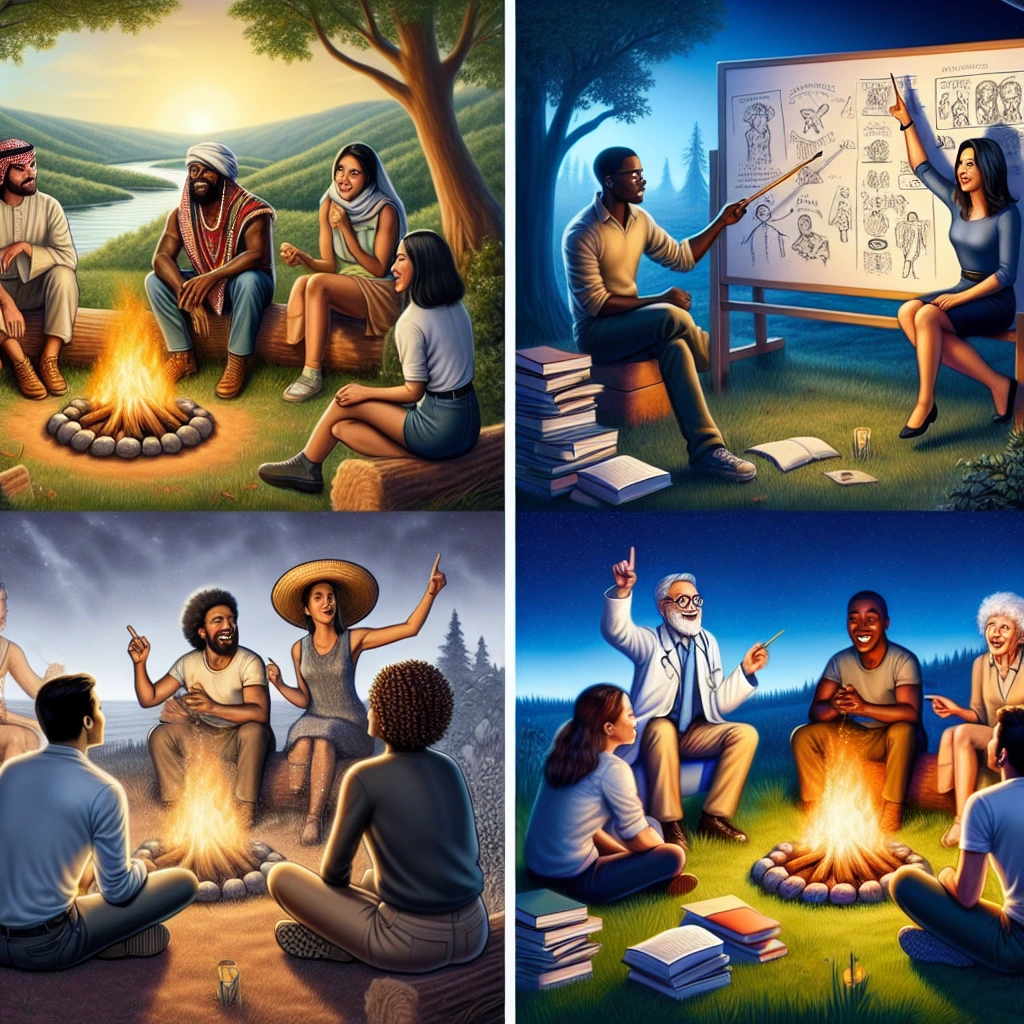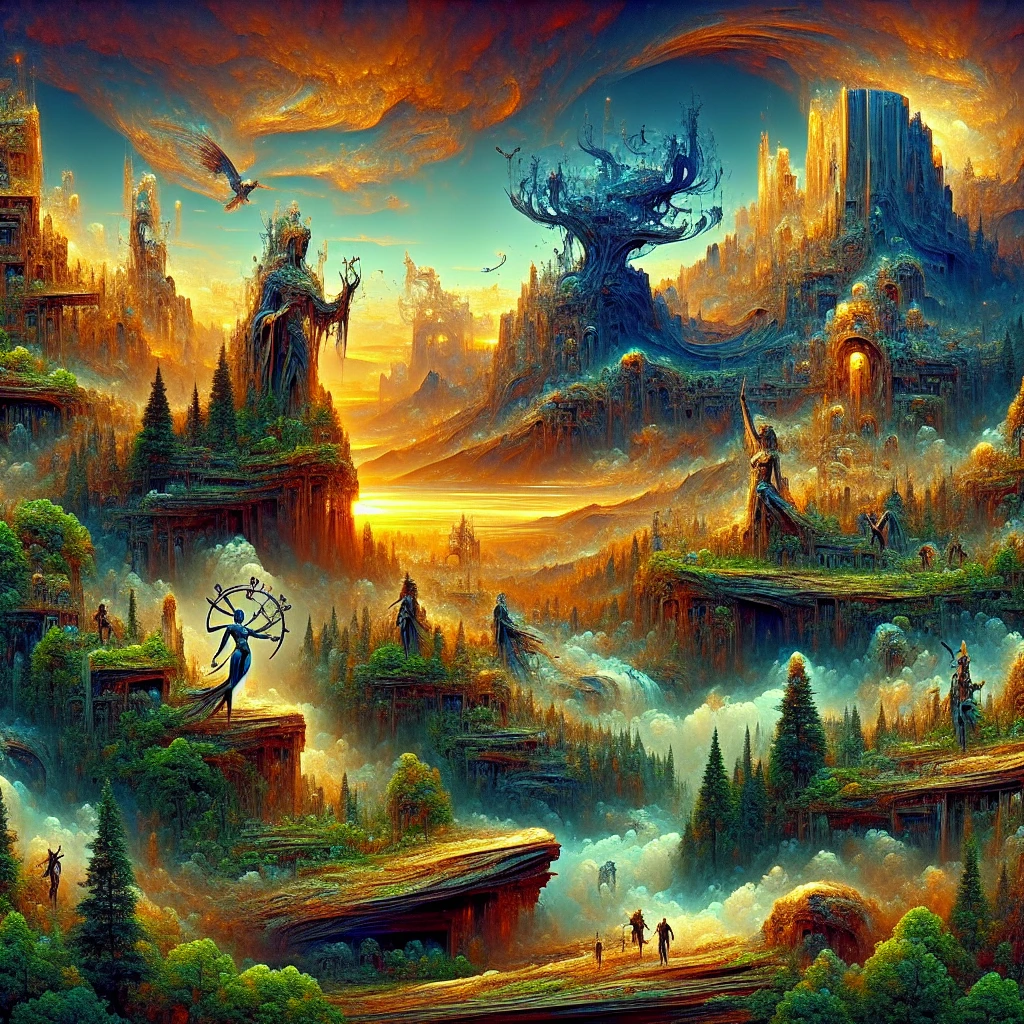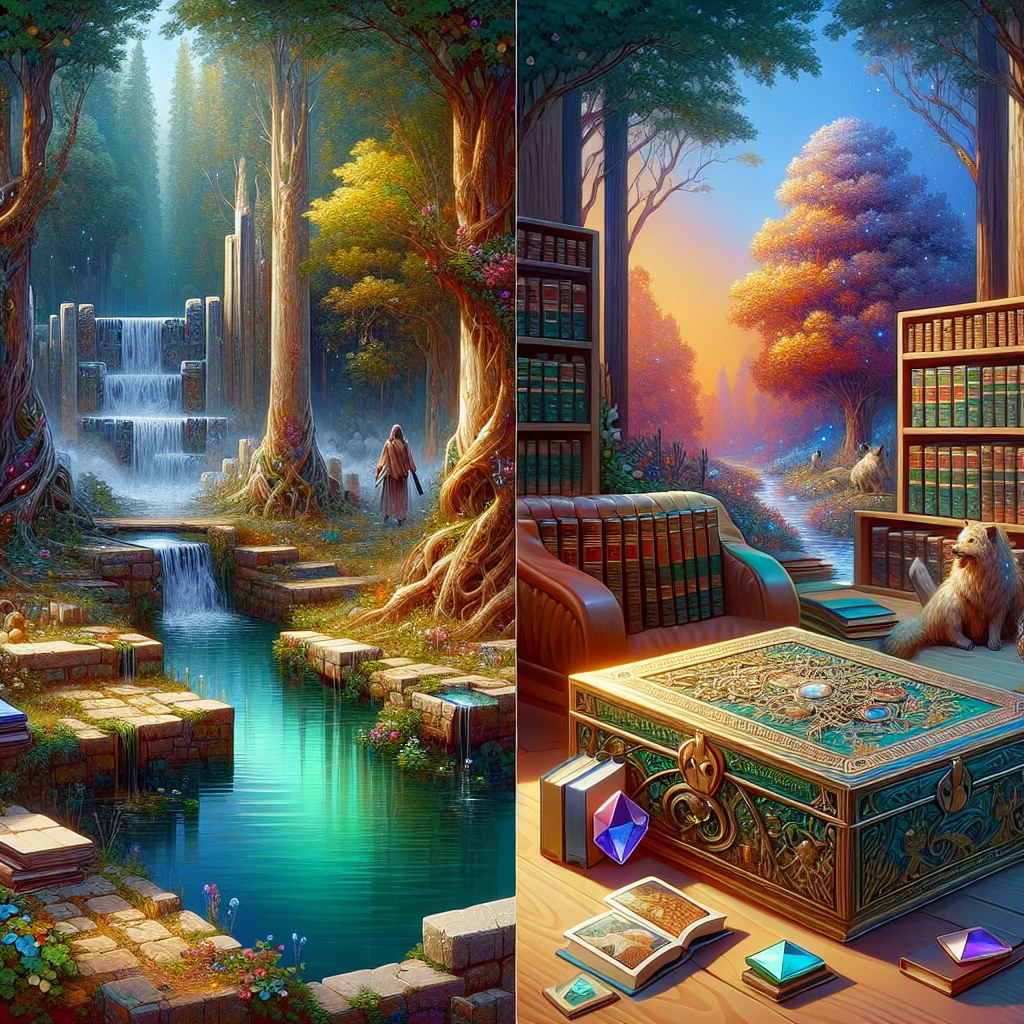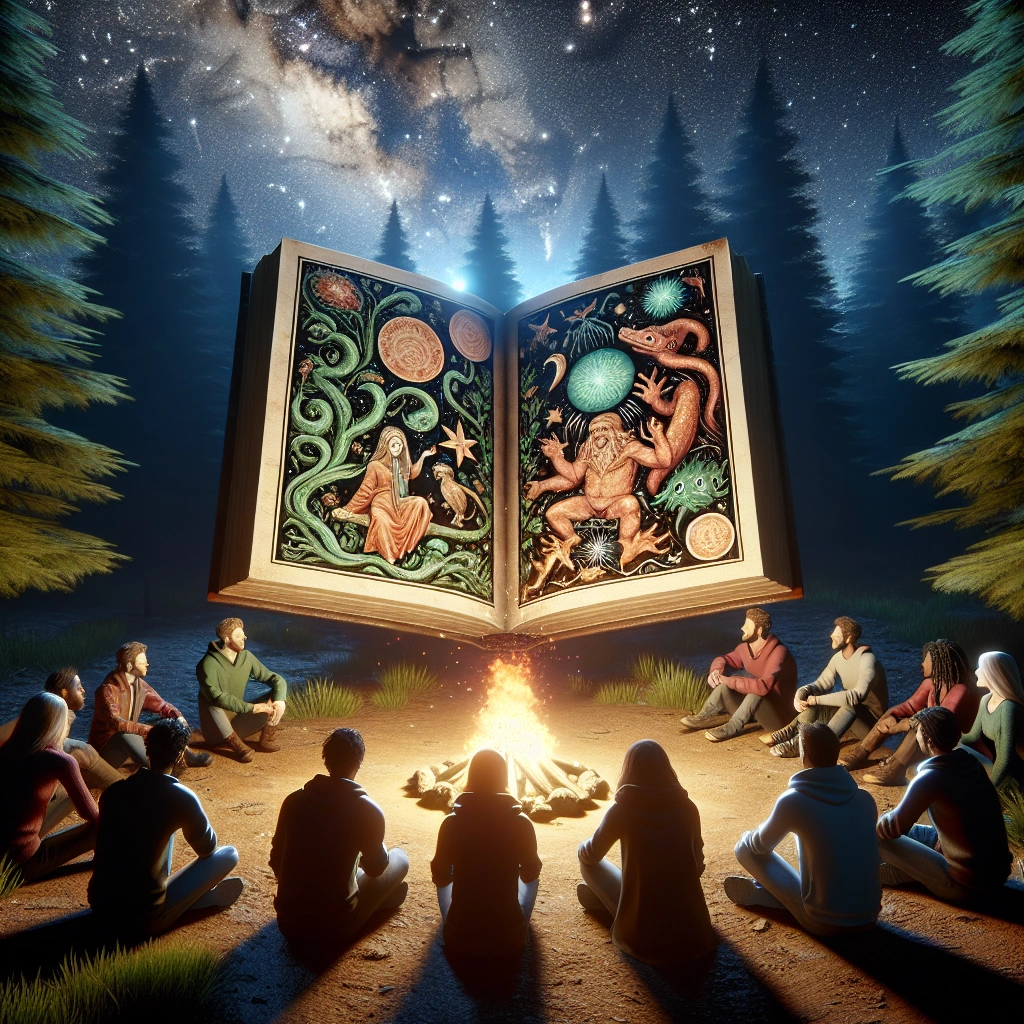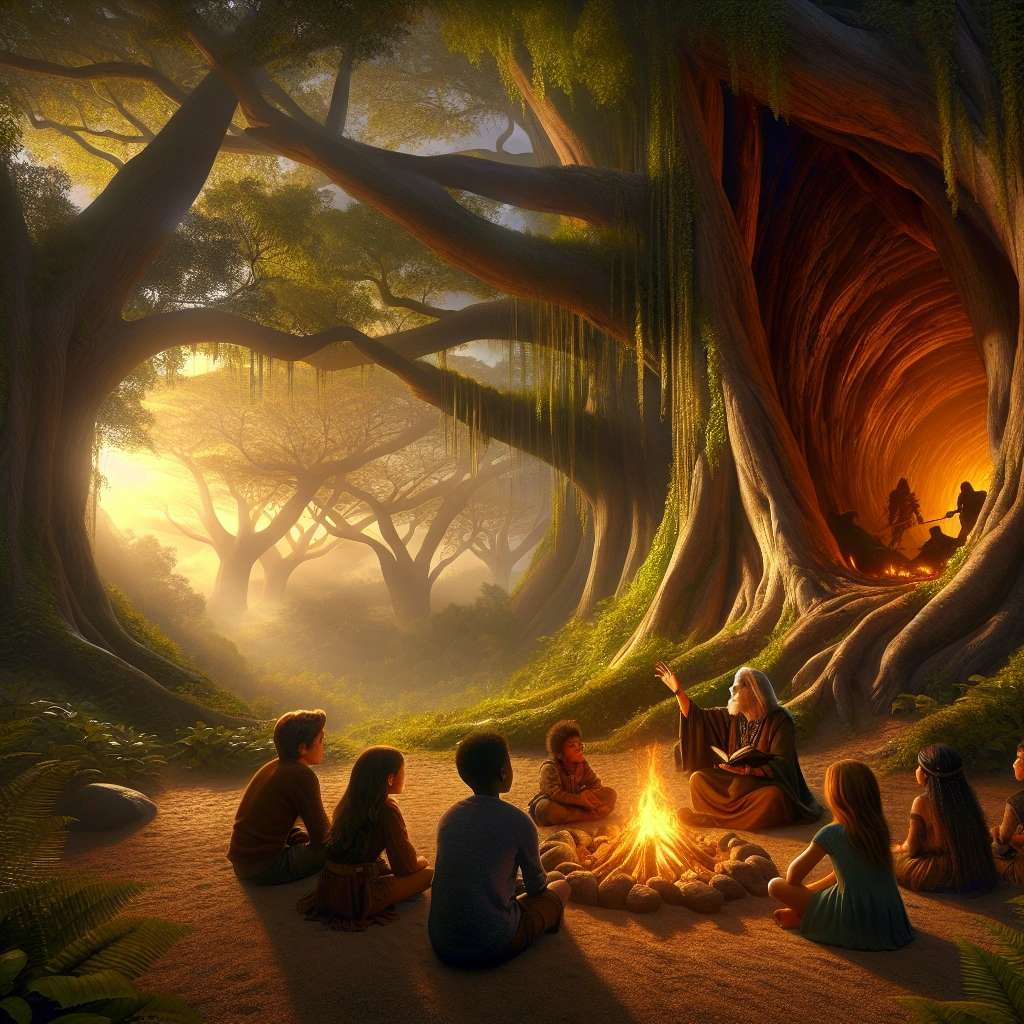What Are Some Examples Of Popular Myths And Stories Around The World?


Myths and stories are traditional tales that often explain natural phenomena, customs, or beliefs within a culture. They can also be fictional narratives that convey moral lessons or entertain.
The importance of myths and stories in culture and society lies in their ability to pass on history, moral lessons, and cultural beliefs from generation to generation. These narratives are the foundation of modern literature and media in every culture, and they provide insight into the values and beliefs of different societies.
Check out this Youtube video to learn about the fascinating myth of Medusa and other popular stories from ancient Greece!
The Power of Myth
Myths serve as powerful cultural symbols, encapsulating the values, beliefs, and traditions of a society. They convey complex concepts through storytelling and symbolism, providing a framework for understanding the world.
For example, the Greek myth of Prometheus reflects themes of rebellion and innovation, symbolizing the human quest for knowledge and progress.
Influence of myths on belief systems and customs is profound, shaping the moral compass and societal norms. For instance, the Indian epic “Ramayana” significantly influences beliefs about dharma (duty) and societal roles, impacting customs related to family structure and interpersonal relationships.
Examples of Popular Myths and Stories in Greek Mythology
The story of Zeus and Hera is a classic tale of divine power and marital discord in Greek mythology. Zeus, the king of the gods, marries Hera, the queen of the gods, but their relationship is fraught with infidelity and conflict.
Hera’s enduring struggle with Zeus’s unfaithfulness and her attempts to win his affection are key themes in various myths. Their dynamic serves as a cautionary tale about the complexities of love and power even among the divine.
The myth of Medusa is one of the most famous and intriguing tales in Greek mythology. Medusa, once a beautiful maiden, is cursed by the goddess Athena, transforming her luscious locks into venomous snakes and granting her the ability to turn men to stone with her gaze.
The story of Medusa, with its elements of betrayal, vengeance, and tragic transformation, has captivated audiences for generations, symbolizing the power and consequences of divine wrath in ancient myth.
The legend of Hercules, also known as Heracles, showcases the extraordinary trials and feats of this legendary hero. Renowned for his incredible strength and bravery, Hercules earns his place in mythology through his twelve labors, which include overcoming mythical beasts, retrieving priceless treasures, and battling formidable adversaries.
His story embodies the ideals of heroism, perseverance, and the eternal struggle between mortals and the divine.
| Myth | Main Theme |
|---|---|
| Zeus and Hera | Marital discord and the complexities of love |
| Medusa | Betrayal, vengeance, and tragic transformation |
| Hercules | Heroism, perseverance, and the struggle against gods |
Examples of Popular Myths and Stories in Norse Mythology
The tale of Odin and the creation of the world:
Odin, the Allfather, and his brothers Vili and Ve are central to the creation of the world in Norse mythology. They slayed the giant Ymir to form the earth, seas, and sky.
From Ymir’s body, they created the world as we know it, using his flesh to form the land, his blood to create the seas, and his skull to build the sky.
The legend of Thor and the giants:
Thor, the god of thunder, is renowned for his battles with the giants, especially the fierce frost giants. One famous legend tells of his encounter with the giant Utgard-Loki, where he was challenged to lift a cat-an impossible feat, as it turned out, since the cat was actually the Midgard Serpent.
This demonstrates the cunning and trickery often present in Norse mythology.
The story of Loki and his trickery:
Loki, the mischievous trickster god, is known for his various exploits and deceptions. One such tale involves him shaving off Sif’s golden hair, leading to a conflict with Thor.
He’s also infamous for engineering the death of Baldur, the beloved god of light, by orchestrating a trick with a mistletoe arrow. Loki’s cleverness and deceit often lead to both chaos and change in Norse mythology.
| Gods | Description |
|---|---|
| Odin | Central to the creation of the world in Norse myth |
| Thor | Known for his battles with giants |
| Loki | Mischievous trickster god |
Now, we can see that Norse mythology is filled with captivating tales of creation, valor, and deceit, making it a rich and dynamic tapestry of lore that continues to captivate audiences worldwide.
Examples of Popular Myths and Stories in Egyptian Mythology
The myth of Osiris and Isis
The myth of Osiris and Isis is one of the most famous in Egyptian mythology. It revolves around the story of Osiris, the god of the underworld, and his wife and sister, Isis.
Osiris was murdered by his jealous brother Seth and dismembered, but Isis managed to reassemble his body and bring him back to life, making him the ruler of the afterlife.
The story of Ra, the sun god
Ra, the sun god, held a prominent place in Egyptian mythology as the creator of life and all living beings. The story of Ra depicts the sun god as the primary force behind the creation of existence.
According to myths, he called all forms of life into existence by uttering their secret names and was believed to have created humans from his tears and sweat.
The legend of Anubis, the god of the afterlife
Anubis, the jackal-headed deity, was the god of the afterlife and guided souls and dead kings to the afterlife. Often depicted as overseeing the process of mummification and judging the souls of the deceased, Anubis played a pivotal role in the Egyptian belief system concerning the afterlife.
He was considered one of the most important gods in Ancient Egyptian history.
Examples of Popular Myths and Stories in Asian Mythology
The legend of the Monkey King in Chinese mythology is a fascinating tale of Sun Wukong, a character known for his mythical birth from a stone and the acquisition of supernatural powers. His rebellious adventures and shape-shifting abilities make for an entertaining narrative, and he is revered as the king of monkeys, responsible for protecting every monkey.
The story of Amaterasu, the sun goddess in Japanese mythology, revolves around the highest deity in Japanese mythology. Amaterasu is known for shutting herself away in a cave, leading to disastrous consequences, and serves as a central figure in the Shinto religion as the goddess of the sun and ruler of Heaven.
The myth of the Ramayana in Hindu mythology carries a core message centered on the triumph of virtue, righteousness, and duty. It imparts valuable lessons about respecting one’s word, the importance of family, the adherence to truth, and the significance of honoring one’s commitments.
Furthermore, the Ramayana highlights ethical lessons such as the importance of following instructions and the impact of temptations.
| Monkey King | Amaterasu | Ramayana |
|---|---|---|
| Born from a stone | Sun goddess | Triumph of virtue |
| Shape-shifting abilities | Ruler of Heaven | Importance of family |
| Rebellious adventures | Shuts herself in a cave | Adherence to truth |
Examples of Popular Myths and Stories in Native American Mythology
The tale of the Navajo creation story
The Navajo creation story, also known as the Diné Bahaneʼ, recounts the emergence of the Navajo people and their quest to find their place in the world. The narrative begins with the First World, which was ultimately destroyed by water, leading to the creation of the Second World where the Navajo people originated.
The legend of the thunderbird in various Native American cultures
The thunderbird holds significant symbolism in Native American history and culture. Depicted as a bird of prey or an avian-human hybrid, this powerful symbol represents nobility, strength, and power across numerous Native American traditions and artworks, such as totem poles, pottery, jewelry, and carvings.
The story of the trickster figure in Native American folklore
Across various Native American tribes, the trickster figure appears in nearly every mythology, taking on forms like coyote, raven, or Old Man. These figures exhibit mischievousness, deceitfulness, and a proclivity for bending the rules of society, representing a vital and fascinating aspect of Native American folklore.
Myths and Stories in Modern Culture
The influence of ancient myths on modern literature and media
Ancient myths have left an indelible mark on modern literature and media, shaping storytelling and character archetypes. For instance, the archetype of the hero’s journey, as seen in ancient myths like the Odyssey, is prevalent in modern stories like “Harry Potter” and “The Matrix.” These myths provide a blueprint for compelling narratives and character development, resonating with audiences across generations.
The incorporation of mythological themes in popular films and books
Mythological themes continue to captivate audiences in popular films and books, offering rich storytelling and moral lessons. For example, the “Percy Jackson” series reimagines Greek mythology in a contemporary setting, appealing to younger audiences and sparking interest in ancient tales.
Additionally, films like “Thor” and “Wonder Woman” leverage mythological elements to bring depth and cultural significance to their storytelling, creating immersive experiences for viewers.
| Greek Mythological Influence in Modern Media |
|---|
| The archetype of the hero’s journey |
| Compelling narratives and character development |
| Mythological themes in “Percy Jackson” and “Thor” |
| Reimagining ancient tales in contemporary settings |
These examples showcase how ancient myths continue to inspire and enrich modern literature and media, bridging the gap between the past and present while engaging audiences in timeless stories.
The Role of Myths and Stories in Moral Education
Teaching moral lessons through myths and stories is a powerful way to instill ethical values in children. For example, ancient Greek mythology teaches the concepts of good versus evil, vanity, and love, providing valuable moral lessons.
These stories of gods and heroes offer insights into human nature and the consequences of one’s actions, serving as cautionary tales for young minds.
The impact of storytelling on ethical development in children is profound. Reading aloud with children allows parents to connect with them in new ways, simplifying complex concepts like morality and virtue.
Through storytelling, children learn to navigate moral ambiguities while developing empathy and understanding of others’ perspectives. This fosters the growth of a strong moral compass, shaping ethical decision-making from an early age.
| Myth or Story | Moral Lesson |
|---|---|
| The story of Medusa in Greek mythology | Teaches the unjust punishment of the victim and the capricious nature of existence. |
| Folktales from around the world | Convey wisdom and moral teachings through imaginative storytelling, imparting valuable life lessons. |
| Stories from indigenous cultures | Offer unique perspectives on moral education, emphasizing the importance of myths and folktales in shaping values and beliefs. |
Myths and stories play a vital role in moral education by conveying timeless lessons and values to children. The power of storytelling lies in its ability to simplify complex moral concepts, instilling virtues and empathy in young minds.
How Myths and Stories Shape Identity
The use of myths to reinforce cultural identity – Myths have served as a powerful tool for reinforcing cultural identity throughout history. For example, in ancient Greek mythology, the story of “The Odyssey” symbolizes the journey of self-discovery and resilience, reflecting the values and identity of Greek culture.
Similarly, the Maori creation myth of “Ranginui and Papatūānuku” reflects the deeply rooted connection to the land and nature, shaping the cultural identity of the Maori people.
The role of storytelling in preserving traditions and heritage – Storytelling has been instrumental in preserving traditions and heritage across diverse cultures. For instance, the Aboriginal Dreamtime stories in Australia not only pass down knowledge and history but also impart crucial values and beliefs, sustaining the Aboriginal cultural heritage.
Likewise, the African oral tradition of Griot storytelling has preserved historical events, cultural norms, and traditions, captivating generations and enriching the collective identity of African communities.
| Myths to Reinforce Cultural Identity | Role of Storytelling in Preserving Traditions and Heritage |
|---|---|
| 1. “The Odyssey” in Greek mythology reflects Greek cultural values and identity. | 1. Aboriginal Dreamtime stories in Australia sustain cultural heritage and pass down crucial values. |
| 2. Maori creation myth of “Ranginui and Papatūānuku” shapes the cultural identity of the Maori people. | 2. African Griot storytelling preserves historical events, cultural norms, and traditions. |
Myths and storytelling serve as anchors that connect individuals to their cultural roots, providing a sense of identity, belonging, and continuity within diverse societies.
Debunking Common Myths
Many myths and stories have been ingrained in our society, and it’s time to uncover the truth behind these misconceptions. From the belief that bulls get angry when they see the color red to the common misconception that we only use 10 percent of our brains, these myths have permeated popular culture.
Exploring the truth behind popular myths and stories
Take, for instance, the myth that goldfish only have a three-second memory. Contrary to popular belief, goldfish possess a memory span of several months and are capable of associative learning.
Another prevalent myth is that George Washington had wooden teeth. While Washington did experience dental issues and used dentures, they were constructed from a combination of human and cow teeth, not wood.
Addressing misconceptions and misunderstandings about certain myths
Another common misconception is that Greek and Roman mythology are the same. Although there are connections between the two, they are distinct belief systems with their own pantheons and stories.
Similarly, the belief that we only use 10 percent of our brain is a fallacy. Research has shown that nearly every part of the brain is active at some point throughout the day, debunking this widespread myth.
The Evolution of Mythology
Changes in storytelling traditions over time
Storytelling traditions have evolved significantly over time, transitioning from oral traditions to written narratives and now to modern digital forms. Ancient civilizations like the Greeks, Etruscans, and Romans had various storytelling forms that have survived over thousands of years.
For example, Aesop and Homer were famous oral storytellers whose tales continue to be revered today. Oral traditions encompassed epic poems, chants, rhymes, and songs, providing a rich tapestry of narratives that formed the basis of cultural heritage.
The adaptation of myths to reflect contemporary values and beliefs
Modern iterations of ancient myths have gained traction in popular culture, reflecting contemporary values and beliefs. Myths revolve around the protagonist of each tale, the hero, and how that hero moves through traditional or modern narratives.
This adaptation allows myths to convey timeless and universal themes, which are relevant in the art of storytelling and in portraying the human experience. The enduring relevance of mythology in modern society showcases its power and significance in shaping cultural consciousness and reflecting contemporary values.
The Future of Mythology
The continued relevance of myths and stories in the modern world
Myths and stories continue to hold immense relevance in the modern world as they provide a framework for understanding universal themes and human experiences. Take, for example, the enduring appeal of Greek mythology in today’s culture.
These ancient stories, through their portrayal of sudden and catastrophic events, reversals of fortune, and fundamental human truths, continue to resonate with people across generations. They offer timeless wisdom and moral guidance, making them an invaluable resource for understanding the complexities of human life.
Exploring new myths and stories in the digital age
In the digital age, mythological narratives are adapting to new mediums and platforms, reaching wider audiences while retaining their fundamental significance. The impact of the digital revolution has not only transformed the way traditional myths are shared but has also given rise to brand new digital myths.
These digital myths encompass a wide range of phenomena, from self-branding and internet memes to computer games. As society continues to evolve in the technological era, digital mythology has become an integral part of the digital world, providing a new direction in the study of social myths.
| Traditional Myths | Digital Myths |
|---|---|
| Passed down orally and through literature | Shared and disseminated through digital technologies |
| Rooted in ancient cultures and beliefs | Embraced by modern scientific and technological society |
| Emphasize universal themes and timeless wisdom | Evolving to encompass self-branding, internet memes, and computer games |
Recommended Amazon Products for Exploring Popular Mythology
Here’s a curated list of products that can help you explore popular mythology with ease. These recommendations are based on relevance to the topic and positive customer reviews.
Greek Mythology: Illustrated Greek Myths for Kids
This book provides an engaging and educational introduction to Greek mythology for children, making it a great resource for beginners and young readers who want to delve into the world of Zeus, Hercules, and other iconic Greek figures. Illustrated Greek Myths for Kids


Mythology: Timeless Tales of Gods and Heroes by Edith Hamilton
Edith Hamilton’s timeless collection of Greek, Roman, and Norse myths offers a comprehensive and accessible look at ancient stories and legends, making it a must-have for anyone interested in mythology. With its captivating narratives and in-depth analysis, this book is a valuable resource for mythology enthusiasts. Mythology: Timeless Tales of Gods and Heroes


Mythology: The DC Comics Art of Alex Ross
This visually stunning book combines classic mythology with modern superhero storytelling, making it an ideal choice for graphic novel fans who are interested in the intersection of mythology and pop culture. With breathtaking illustrations and engaging storytelling, it offers a unique perspective on mythology. Mythology: The DC Comics Art of Alex Ross


Mythology: Timeless Tales of Gods and Heroes by Edith Hamilton
This comprehensive and engaging book covers a wide range of mythological stories from various cultures, providing readers with a rich and diverse exploration of ancient legends. Mythology: Timeless Tales of Gods and Heroes


| Pros | Cons |
|---|---|
| Provides an introduction to Greek mythology suitable for children | May not offer in-depth analysis of myths |
| Accessible and engaging narratives | Focused primarily on Greek mythology |
| Positive reviews from parents and educators | Limited to specific audience |
Top Recommended Product for Exploring Popular Mythology
If you’re looking for the best solution to explore popular mythology, we highly recommend Mythology: Timeless Tales of Gods and Heroes by Edith Hamilton. This comprehensive book offers a wide range of mythological stories from varied cultures, providing readers with an enriching exploration of ancient legends.
Ready to dive into the world of mythology? Check out Mythology: Timeless Tales of Gods and Heroes today for a captivating journey through ancient myths and legends!


Conclusion
Popular myths and stories can be found in various cultures around the world. From Greece, we have the story of Hercules, whose adventures and trials are well-known.
In Norse mythology, the tale of Thor, the god of thunder, is a beloved story with enduring popularity.
Furthermore, popular myths and stories are also found in ancient Egyptian mythology, with the legend of Osiris and Isis being one of the most well-known. In addition, the epic of Gilgamesh from Mesopotamian mythology is another example of a popular myth that has stood the test of time.
These stories continue to captivate and inspire people to this day.
Popular myths and stories are prevalent in many cultures, such as the Chinese myth of the Monkey King, known for his mischief and adventures. Additionally, the Native American story of the creation of the world and the emergence of the first people is another example of a widely recognized myth.
These narratives serve as a reflection of human imagination and the enduring power of storytelling across different societies.


